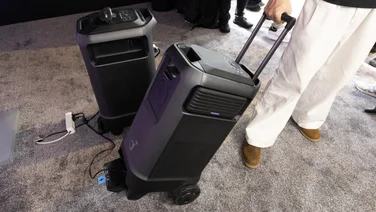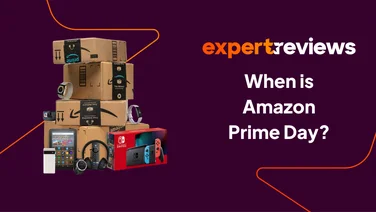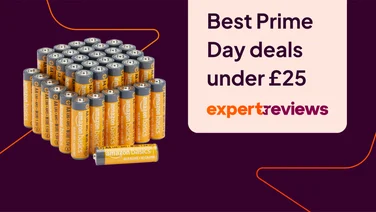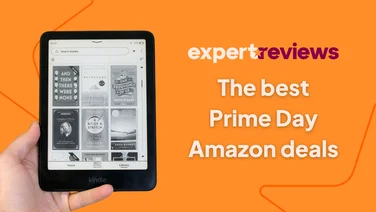To help us provide you with free impartial advice, we may earn a commission if you buy through links on our site. Learn more

There’s a reason why Barclays was the only major bank not to commit to Apple Pay – it had a revamp of its own cashless payments system up its sleeve. Literally. The new bPay system includes a range of three payment devices: a wristband to tuck under your shirt sleeve, a keyring fob and a sticker than can be affixed to the back of a mobile phone, effectively turning any phone (smart or not) into a cashless payment device.
Is it more convenient than cash or card? Does it have any advantages over Apple Pay and other cashless payment systems? We’ve been testing the devices to find out.
How to set up bPay
To begin using bPay, you need to buy one or more of the three available devices. The wristband is the most expensive, costing £25 from the bPay shop. Next comes the keyring fob, which costs £20, and cheapest of all is the sticker – which can be affixed to almost anything with a flat surface or even tucked into a wallet or purse – for £15.
The wristband and the fob are supplied with a chip, which is the same size as a mobile phone SIM card. You pop the chip into the wristband/keyring fob, which is a bit of a fiddly process, although there’s little chance of that potentially valuable chip falling out of either device. The sticker has all the necessary circuitry built in.
You then have to download the bPay app for your iOS or Android smartphone to register the devices and load them with money. You can set up an account via the bPay website if, say, you’re a Windows Phone user, but the mobile apps are definitely more convenient.
Setup is pain-free. You need to register an email address and select a five-digit passcode. Our only gripe is that, on Android, the app uses its own software keyboard (presumably to prevent sensitive data being captured by rogue keyboard apps) which displayed notable lag in our tests.

You then need to top up the bPay wallet before you can start using the device for payments. You can use any Visa/Mastercard credit or debit card to top up the wallet, up to a maximum of £200. You don’t need to be an existing Barclaycard customer. One notable irritation is that if you use more than one bPay device, each must have a separate “wallet”, meaning each device must be topped up separately. The wristband and key fob can’t draw funds from the same pool of cash, which we think is pretty daft.
Using bPay
Using the bPay devices is predictably painless. Any retailer that supports contactless payments can accept bPay devices, including Waitrose, WH Smith, Marks & Spencer and numerous other High Street chains. Londoners can also use the devices as pseudo Oyster Cards, allowing them to touch in and out on journeys across the Tube network without having to queue up for a ticket. You can register the device on the Transport for London website to track journeys, although you don’t have to. Note – bPay devices can only be used for individual full-price journeys, not season tickets or any concessionary fares.
We did get a funny look from the cashier in McDonald’s when we slapped a wristband against the payment device, but she soon got over it. The sticker on the back of the smartphone is by far the least conspicuous of the bPay devices, and the one you’re least likely to lose, break or forget. We had to affix ours to the inside of the smartphone’s case, as the curved back on our HTC One didn’t provide the necessary flat surface.

The accompanying mobile app keeps track of payments and your current balance, and it’s updated the instant you make a purchase. The auto top-up feature is both handy and dangerous, allowing the app to draw down more money from your credit/debit card the moment you pass a certain balance threshold. Your payment will be rejected if you don’t have enough money in the account to cover a purchase.
bPay Clothing

For those not massively enamoured by the idea of wearing a wristband or attaching a sticker to their phone, clothing brand Lyle & Scott has announced a novel ‘contactless jacket’ that integrates a holder for a Barclays bPay chip into one of the jacket’s cuffs on the right-hand sleeve. It’s available in a choice of either Admiral Blue or Track Black and came out of Lyle & Scott’s innovation team.
Mike Saunders, Managing Director for Digital Consumer Payments at Barclaycard had this to say about the collaboration: “Insight from our customers has found that people want contactless payments to be seamless, fast and convenient, however the style and look of the product is also incredibly important. The combination of the heritage of a brand like Lyle & Scott, with the latest payments technology from bPay will further advance contactless payments as being the easiest and quickest way to buy everyday things – be it a morning coffee, quick trip to the supermarket, or a bus trip across town.” The jacket will cost £150.
Our verdict
Will we continue to pay for goods using our bPay devices? To be frank, we’re not sure it’s worth the bother. It doesn’t offer any real advantage over a contactless debit card that most banks now issue by default, and has several key downsides. Firstly, you’re stuck if the retailer doesn’t offer contactless payments, whereas contactless cards can of course also be used in regular chip-and-pin readers. The £20 transaction limit that applies to any contactless payment device is another drawback, because unless you’re only popping out for a sandwich or another small item, you’ll need cards or cash with you anyway.
Apple Pay is currently hamstrung by the same restrictions, but once retailers start using Apple Pay terminals, customers will be able to authenticate their payments using the fingerprint reader on their iPhone and exceed that £20 limit, which could truly make it a viable alternative to cash or cards.

The only way in which we could see bPay being put to regular use is as a pocket money system for children. You could give the kids a key fob, load it up with £20 and let them loose in the shops, safe in the knowledge they can’t overspend. It’s less likely to be stolen than cash, and if the bPay device is mislaid or swiped, you can cancel it right away and stop any future payments. A bPay spokesperson told us there is nothing to prevent parents issuing bPay devices to their children, whereas it would break bank terms and conditions (not to mention all common sense) to give the kids your regular contactless payment card.
In short, we think bPay is an over-engineered solution to a problem that doesn’t exist. Why bother wearing a wristband or even using a keyring fob instead of the card that’s already in your bag or pocket? The smartphone sticker is more practical and the idea of issuing kids with a pre-paid payment device does have appeal, but it’s simply not worth the hassle for grown-ups.






